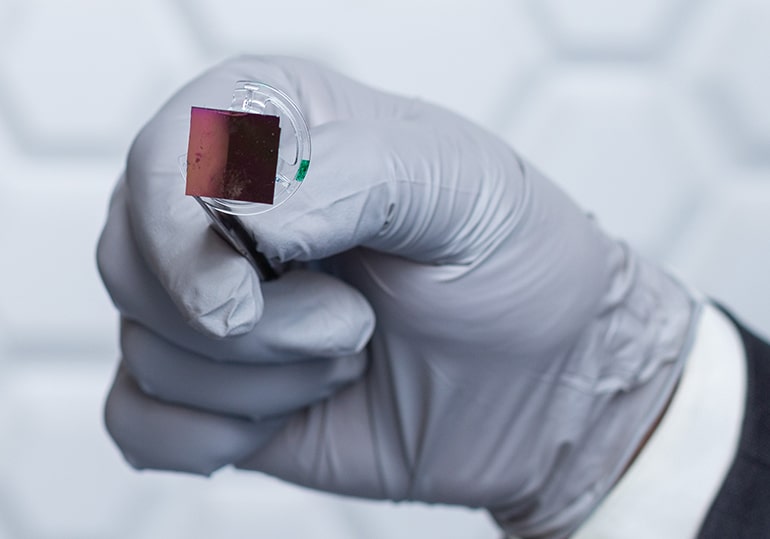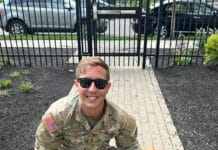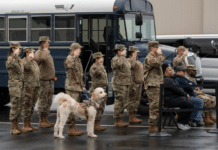COLUMBUS, Ohio – The U.S. Department of Defense has awarded $3.1 million to researchers at The Ohio State University to study whether tissue nanotransfection (TNT) can deliver therapeutic genes into damaged tissues quickly and effectively to improve the standard of care for injured military personnel.
Researchers with The Ohio State University Wexner Medical Center, College of Engineering, and College of Medicine are leading the mouse study that focuses on non-viral gene and reprogramming-based cell therapies for peripheral nerve injury in military environments.
Traumatic nerve injuries in the military typically result from high-velocity gunshot wounds or blast injuries that compromise multiple tissues. Although warfare has historically led to a large number of nerve injuries, the standard care for this condition has evolved very little throughout conflicts, continuing to pose significant challenges for military surgeons.

“There’s a clear need to develop novel approaches that can be used to treat traumatic nerve injuries more promptly on the battlefields and at major military medical centers. We’re trying to develop game-changing nanotechnologies to repair or protect mangled nerves or muscle through a one-time intervention that lasts only a few milliseconds,” said Daniel Gallego-Perez, associate professor in the departments of Biomedical Engineering and Surgery at Ohio State, whose research focuses on nanomedicine, gene delivery, cell reprogramming, and regenerative medicine.
This research builds on earlier studies that demonstrated how the TNT process created by engineering and medical researchers at Ohio State can introduce genetic material into skin cells and convert them into blood vessels and nerve cells.
We had previously explored the use of TNT on skin tissue. We have since moved on to exploring the use of TNT on surgically accessible tissue, and this grant will allow us to explore not only the use of TNT in complex cases of nerve injury but also in combination with nerve transplantation procedures,” Gallego-Perez said, who will lead the project along with Dr. Amy Moore, chair of the department of Plastic Surgery and Dr. W. David Arnold, an associate professor in the department of Neurology.
The treatment of traumatic nerve injuries is often delayed in order to address additional complications from the injury, including hemorrhages, tissue necrosis, and infections, among others. This, in turn, can result in severe long-term consequences, as the injured nerve and denervated muscle tissue continue to progressively deteriorate, Moore said.
“The complications from peripheral nerve injuries are further compounded by life-long chronic disabilities.
Nerve injuries can result in pain, weakness, loss of sensation, and loss of independence, and can have a significant impact on unit readiness and return-to-duty rates,” said Moore, who leads the Military Medicine program with her colleague and former Navy physician, Dr. Jason Souza, at Ohio State Wexner Medical Center. This innovative program brings together a team of advanced reconstructive surgeons, military specialists, and rehabilitation experts to help restore the health and well-being of severely injured military members.
These studies will be conducted in preclinical animal models of nerve injury to develop optimized TNT strategies that will:
● generate new blood vessels to support the repair of nerve injury
● act as a protective strategy for denervated muscle
● enable transplantation of functional/living nerve tissue without the need for aggressive immunosuppressive regimens.
“We believe that our TNT technology can one day be used to either replace the current standard of care for nerve injuries in the military or delay progressive nerve damage until proper surgical intervention,” Gallego-Perez said.
All content herein is owned by author exclusively. Expressed opinions are NOT necessarily the views of VNR, authors, affiliates, advertisers, sponsors, partners, technicians, or VT Network. Some content may be satirical in nature.
All images within are full responsibility of the author and NOT VNR.
Read Full Policy Notice - Comment Policy






























